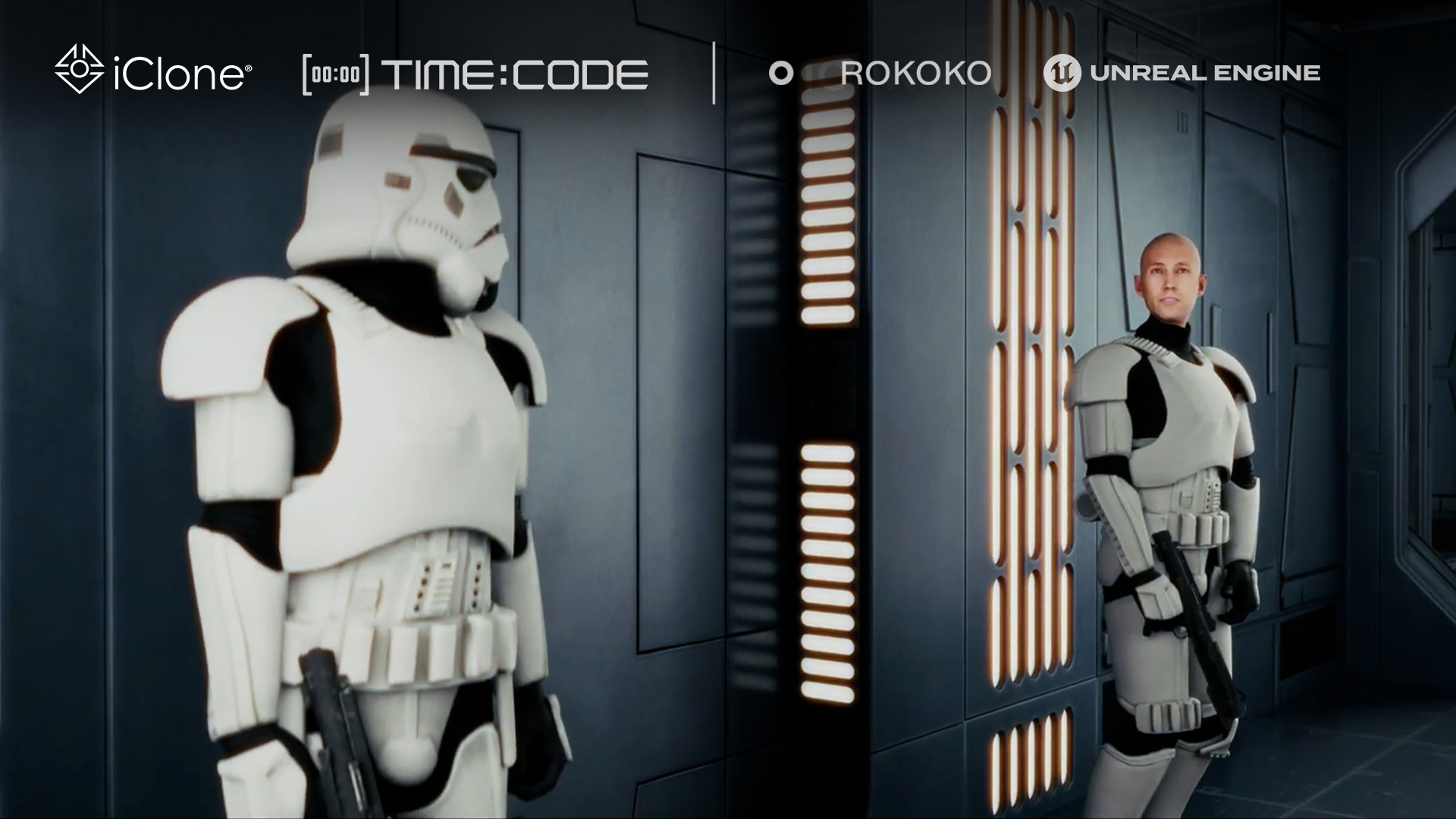
Much of filmmaking thrives on the smooth coordination of independent teams. In his latest video, Michael Tiedtke emphasizes the critical role of consistent timecode in maintaining that cohesion across disciplines. He demonstrates how the iClone Timecode plugin was used to produce a short Star Wars fan film in Unreal Engine, ensuring frame-accurate synchronization for elements like dialogue, motion capture, and visual effects. This article is a brief overview of how his timecoding approach enabled smooth integration of mixed media during production, saving both time and resources in the process.

Michael Tiedtke
Michael Tiedtke is a Pipeline Technical Director at Stiller Studios, where he develops advanced workflows and tools for real-time animated feature production. His work draws on deep expertise in character rigging, simulation, and the Unreal Engine. He is currently contributing to the film Handbok för Superhjältar – Röda Masken. Outside the studio, Michael runs a widely viewed YouTube channel with over a million views. There he shares practical, production-tested tutorials on 3D, VFX, and real-time animation for artists at all levels.
Capturing Timecoded Performance
By connecting Rokoko Studio to iClone Motion LIVE, Michael was able to stream motion capture data directly for real-time preview on his 3D characters. At the same time, he set up a timecode-enabled reference camera to align the motion accurately. To ensure synchronization, he matched the frame rate and system clock across all recording devices. The motion capture was then recorded using system timecode, enabling timecoded burn-in data for each frame in iClone, direct timecode input and timeline display.


Embedded Timecodes for Effortless Alignment
iClone enabled Michael to precisely align motion capture data with reference video using their embedded timecodes. The process was both fast and precise through intuitive context menu commands and automatic alignment across all media types, including audio. The same method was applied to facial and audio capture, allowing him to synchronize both elements and fine-tune facial expressions with ease.


Post-Production Alignment in DaVinci and Unreal
For previsualization, Michael handled the initial editing in iClone and exported the previz video with a timecode burn-in. He then used DaVinci Resolve to align the timecoded video on the timeline with the audio track for perfect synchronization. In Unreal Editor, characters were placed into the scene, and Metahuman facial capture was integrated. Thanks to the consistent timecode across all assets, audio and body motion remained perfectly aligned in the Sequencer; regardless of when each element was created.


Undeniable Advantage of Timecoding
For Michael, iClone’s timecode functionality proved essential for syncing a wide range of multimedia assets. Presented through an intuitive, easily accessible interface, timecoding is just one of the many features that showcase Reallusion’s commitment to modern, efficient workflows in digital filmmaking — Another step toward democratizing the CG industry by saving time, effort, and resources.

Related Posts








